About the cyclotron facility
BC Cancer operates a cyclotron/radiopharmacy at its Vancouver location. Licensed by Health Canada and the Canadian Nuclear Safety Commission, the cyclotron/radiopharmacy produces both clinical and research radiotracers for the publicly-funded provincial Molecular Imaging and Therapy program.
A cyclotron is a machine used to make short-lived radioactive isotopes that can be used for medical imaging or research. A cyclotron does this by accelerating particles (such as hydrogen atoms) to very high speeds and focusing them on a target substance where a reaction takes place that produces a radioactive element. Both the accelerated particles and target substance are specifically chosen to produce the desired radioactive element.
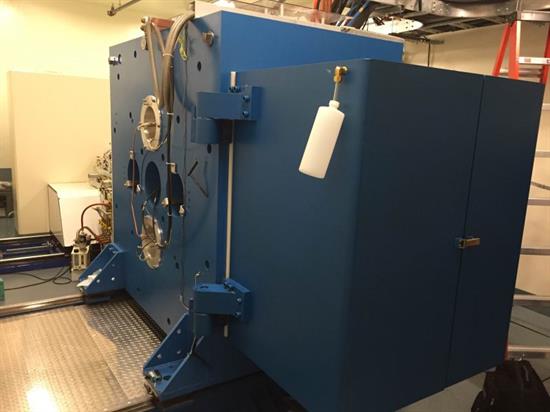
|
BC Cancer's ACSI TR-19 Production Cyclotron
|
For more information on the (ACSI) TR-19 cyclotron, visit the Advanced Cyclotron Systems Inc.
website.
Once produced in the cyclotron, the radioactive material is transferred to a shielded "hot cell" where it is run through sophisticated chemistry modules to produce biological tracers. These tracers can be used in medical imaging to more accurately diagnose and manage disease.
The main isotope produced by BC Cancer's cyclotron is Fluorine-18 (F-18). This is used in the tracer Fluorodeoxyglucose (FDG); which maps glucose metabolism in the body. F-18 is a radioactive isotope that decays through the emission of positrons. These positrons are the key to Positron Emission Tomography (PET) scans that are used daily around the world for cancer diagnosis and cancer treatment planning.
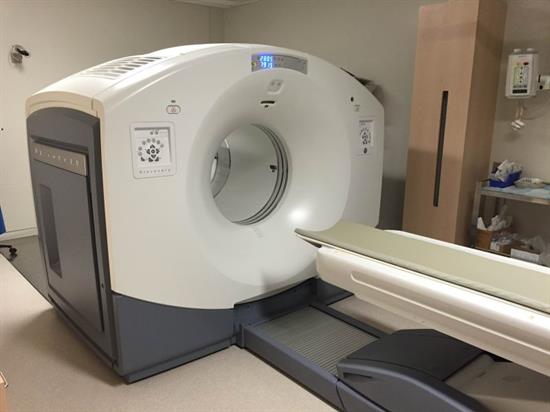
|
One of BC Cancer's PET/CT Scanners
|
|
In addition to producing F-18, BC Cancer also produces other radioactive isotopes such as Carbon-11 (C-11), Gallium-68 (Ga-68), and Technetium-99m (Tc-99m) for medical imaging studies. Nitrogen-13 (N-13) is also produced as a by-product in making some of these isotopes.
| | % Activity Remaining |
Isotope
N-13 | Half-Life
10 minutes | 1 Hour
2% | 3 Hours
0% | 1 Day
0% | 3 Days
0% | 1 Month
0% |
| C-11 | 20 minutes | 13% | 0% | 0% | 0% | 0% |
| Ga-68 | 68 minutes | 54% | 16% | 0% | 0% | 0% |
| F-18 | 110 minutes | 69% | 32% | 0% | 0% | 0% |
| Tc-99m | 6 hours | 89% | 71% | 6% | 0% | 0% |
| Zr-89 | 3.3 days | 99% | 97% | 81% | 53% | 0% |
As a device producing radioactivity, cyclotrons require licensing through the Canadian Nuclear Safety Commission (CNSC). Cyclotrons are not a new technology and the CNSC has extensive experience with ensuring safety of staff and the general public from cyclotron facilities across Canada.
 The design of the entire cyclotron facility, including safety considerations for staff and the general public, has been reviewed and approved by the CNSC. The facility has multiple levels of shielding, protection and monitoring to ensure safe operation.
The design of the entire cyclotron facility, including safety considerations for staff and the general public, has been reviewed and approved by the CNSC. The facility has multiple levels of shielding, protection and monitoring to ensure safe operation.
For more information, visit the CNSC website.
Shielding
The walls, ceiling, and door of the cyclotron "vault" are approximately 4 feet thick of specialized concrete to protect workers and the general public from radiation exposure. This is in addition to the lead shielding that already surrounds the targets attached to the cyclotron itself.
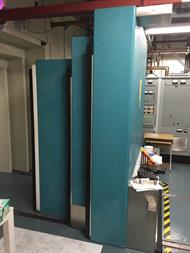
|
Cyclotron Vault Door
|
Cyclotron and radiopharmacy staff work with radioisotopes in lead-shielded "hot cells" or behind lead-shielded "L-Block" workstations to minimize their radiation exposure.
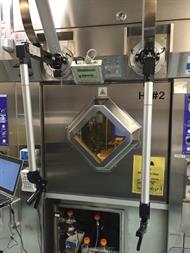
|
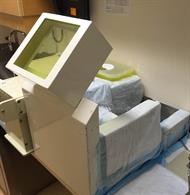
|
Lead-Shielded Hot Cell and L-Block Workstations
|
The facility has a sophisticated radiation monitoring system with over 30 radiation detectors monitored and controlled by a centralized control computer.
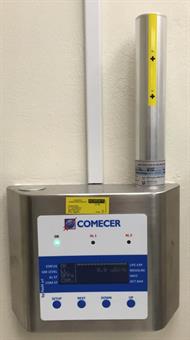
|
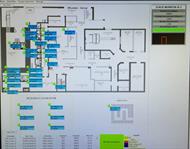
|
Computer Controlled Radiation Monitoring System
|
Handheld, battery-operated, radiation survey meters and contamination meters are available throughout the cyclotron facility.
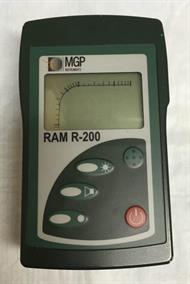
|
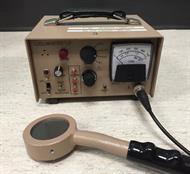
|
|
Handheld, Battery-Operated Radiation Meters |
All staff and visitors to the facility must use a sensitive radiation detector "exit monitor" to prevent accidental removal of any radioactive material from the facility.
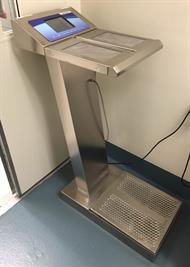
|
Radiation Detection Exit Monitor
|
All staff and visitors to the cyclotron facility are issued direct reading dosimeters enabling instant detection and readout of radiation exposure. In addition, all staff members wear personal dosimeters to monitor their radiation exposure to their extremities and body. All dosimeter results are monitored by Radiation Safety Officers.
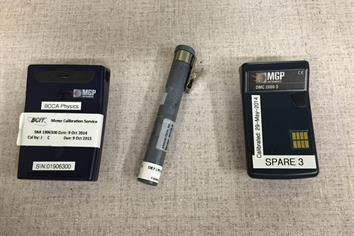
|
Direct Reading Radiation Dosimeters
|
Containment
